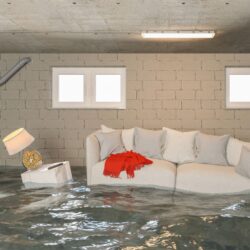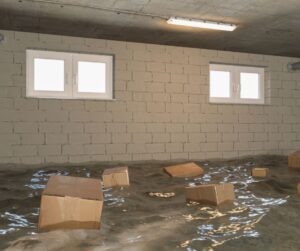Regardless of whether you use your basement as a family room or for storage purposes, it is essential to implement preventive measures to protect against flood damage. Here are five ways to organize your basement and safeguard your valuables from potential flooding:
1.) Conduct a Comprehensive Inventory of Basement Items
Create a detailed list that encompasses all the items in your basement, including plumbing fixtures, available lighting, and electrical outlets. It is important to label the main water shutoff valves for easy access in the event of a pipe burst or frozen pipe. Identify important belongings and dispose of any unnecessary items responsibly. This is also an excellent opportunity to donate clothing, electronics, and other unwanted possessions to charitable organizations such as Goodwill or local donation centers.
2.) Safeguard and Label Valuables
Basements are often characterized by cold and damp conditions, making it essential to protect your valuables from moisture and potential mold growth. To achieve this, we recommend using large, transparent plastic storage bins. Avoid overfilling the bins, as you may need to relocate them to higher ground during a flood emergency. Additionally, make sure to label the bins to facilitate easy retrieval of important items during a disaster.
3.) Install a Dehumidifier in Your Basement
Installing a dehumidifier in your basement is an effective method to regulate the climate and prevent moisture-related damage to stored items. In the event of a flood caused by a burst pipe, water heater leak, or washing machine malfunction, having a dehumidifier present can aid in removing moisture from the environment, thereby reducing the likelihood of mildew or mold infestation. If your unsure of which dehumidifier to buy, Consumer Reports’ list of Best Dehumidifiers for Basements, Crawl Spaces, and Other Damp Areas is a good place to start researching for what you need.
Additionally, make sure to engage in some spring cleaning to eliminate any existing mold spores that may have formed in hard-to-reach areas of your basement.
4.) Maximize Space on Basement Walls, Ceilings, and Roof
To safeguard items you deem valuable, it is advisable to store them at least a foot above the basement floor to minimize flood damage from rising water levels. Utilize wall-mounted hooks and shelves, as well as ceiling-mounted storage options. Get creative with your storage solutions, such as attaching a flashlight to the wall next to your electrical fuse box for easy accessibility during emergencies.
5.) Secure and Clear Space around Essential Appliances
Important appliances like water heaters, furnaces, washers, and dryers are commonly located in basements. It is imperative to secure these items to the wall in preparation for potential disasters like floods or earthquakes. Clearing space around these appliances is also crucial to prevent water damage in case of equipment malfunction or leaks. Moreover, maintaining clear access will facilitate the work of water damage restoration professionals you may need to call for assistance.
For homeowners residing in flood-prone areas, we highly recommend considering the installation of a sump pump in your basement.
Should you require restoration assistance following a flood or any other emergency in your home, please do not hesitate to contact us today!



